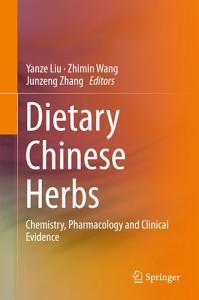Sea Buckthorn Oil References
This work presents up-to-date information on chemical, pharmacological, clinical studies and historical uses of common dietary Chinese herbs. Authored by native experts in the field, the reader is introduced to each herb with a brief chronological review of Chinese literature on dietary herb uses, with chapters dedicated to each selected herb including colour photos for each herb.
- Wu et al (2007) Flora of China, vol 13. Science Press and Missouri Botanical Garden Press, Beijing and St. Louise
- Zubarev (2008) Commerical cultivation of Seabuck thorn in Western Siberia, Russia. In: Singh V (ed) Seabuckthorn (Hippophae L.): a multipurpose wonder plan:. Daya Publishing House, New Delhi
- Pharmacopoeia Committee of P. R. China (2010) Pharmacopeia of people’s republic of China, vol 1. China Medical Science Press, Beijing
- Yang, Kallio (2002) Composition and physiological effects of sea buckthorn (HippophaE) lipids. Trends Food Sci Technol 13(5):160-167
- Huang (1994) Handbook of commonly used traditional Chinese medicine constituents and pharmacology, 1st edn. Chinese Medical Science and Technology Press, Beijing
- Zeb (2004) Important therapeutic uses of Sea Buckthorn (Hippophae): a review. J Biol Sci 4 (5):687-693
- Leskinen et al (2009) Regioisomer compositions of vaccenic and oleic acid containing triacylglycerols in sea buckthorn (Hippophae rhamnoides) pulp oils: influence of origin and weather conditions. J Agric Food Chem 58(1):537-545
- Li et al (2007) Phytosterol content of sea buckthorn (Hippophae rhamnoides L.) seed oil: extraction and identification. Food Chem I01(4):1633-1639
- Arimboor and Arumughan (2012) HPLC-DAD-MS/MS profiling of antioxidant flavonoid glycosides in sea buckthorn (Hippophae rhamnoides L.) seeds. Int 1 Food Sci Nutr 63(6): 730-738
- Yang et al (2009) Flavonol glycosides in wild and cultivated berries of three major subspecies of Hippophad rhamnoides and changes during harvesting period. Food Chem 115(2):657-664
- Chen et al (2013) Identification, quantification and antioxidant activity of acylated flavonol glycosides from sea buckthorn (Hippophae rhamnoides ssp. sinensis). Food Chem 141 (3):1573-1579
- Zadernowski et al (2005) Composition of phenolic acids in sea buckthom (Hippophae rhamnoides L.) berries. J Am Oil Chem Soc 82(3):175-179
- Arimboor et al (2008) Simultaneous estimation of phenolic acids in sea buckthorn (Hippophad rhamnoides) using RP-HPLC with DAD. J Pharm Biomed Anal 47(1):31-38
- Andersson et al (2008) Tocopherols and tocotrienols in sea buckthorn (Hippophae rhamnoides L.) berries during ripening. J Agric Food Chem 56(15):6701-6706
- Zeb (2004) Chemical and nutritional constituents of sea buckthorn juice. Pak J Nutr 3(2): 99-106
- Bal et al (2011) Sea buckthorn berries: a potential source of valuable nutrients for nutraceuticals and cosmoceuticals. Food Res Int 44(7):1718-1727
- Andersson et al (2008) Carotenoids in sea buckthorn (Hippophae rhamnoides L.) berries during ripening and use of pheophytin a as a maturity marker. J Agric Food Chem 57(1): 250-258
- Andersson (2009) Carotenoids, tocochromanols and chlorophylls in sea buckthorn berries (Hippophae rhamnoides) and rose hips (Rosa sp.). Swedish University of Agriculture Sciences, Alnarp
- Suryakumar and Gupta (2011) Medicinal and therapeutic potential of Sea buckthom (Hippophae rhamnoides L.). J Ethnopharmacol 138(2):268-278
- Yang et at (2011) Influence of origin, harvesting time and weather conditions on content of inositols and methylinositols in sea buckthorn (Hippophae rhamnoides) berries. Food Chem 125(2):388-396
- Xu et al (2011) Health benefits of sea buckthorn for the prevention of cardiovascular diseases. J Fund Foods 3(1):2-12
- Sun et al (2012) Isorhamnetin inhibits H(2)O(2)-induced activation of the intrinsic apoptotic pathway in H9c2 cardiomyocytes through scavenging reactive oxygen species and ERK inactivation. J Cell Biochem 113(2):473-485
- Bao and Lou (2006) Isorhamnetin prevent endothelial cell injuries from oxidized LDL via activation of p38MAPK. Eur J Pharmacol 547(1-3):22-30
- Hwang et al (2012) UV radiation-induced skin aging in hairless mice is effectively prevented by oral intake of sea buckthorn (Hippophae rhamnoides L.) fruit blend for 6 weeks through MMP suppression and increase of SOD activity. Int J Mol Med 30(2):392-400
- Hsu et at (2009) Protective effects of seabuckthorn (Hippophae rhamnoides L.) seed oil against carbon tetrachloride-induced hepatotoxicity in mice. Food Chem Toxicol 47(9):2281-2288
- Eccleston et al (2002) Effects of an antioxidant-rich juice (sea buckthorn) on risk factors for coronary heart disease in humans. J Nutr Biochem 13(6):346-354
- Wang et al (2011) Hippophae rhamnoides linn. for treatment of diabetes mellitus: a review. J Med Plant Res 5:2599-2607
- Upadhyay et al (2009) Safety and healing efficacy of Sea buckthorn (Hippophae rhamnoides L.) seed oil on bum wounds in rats. Food Chem Toxicol 47(6):I146-1153
- Xing et al (2002) Effects of sea buckthorn (Hippophai rhamnoides L.) seed and pulp oils on experimental models of gastric ulcer in rats. Fitoterapia 73(7):644-650
- Romero (1990) Sterol-dependence of gastric protective activity of unsaturated phospholipids. Dig Dis Sci 35(10):1231-1238
- Yeh et al (2012) Dietary seabuckthorn (Hippophae rhamnoides L.) reduces toxicity of oxidized cholesterol in rats. e-SPEN Journal 7(2):e69-e77
- Committee (2002) Chinese materia medica—Tibetan medicine. Shanghai Science and Technology Press, Shanghai
- Cenkowski et al (2006) Quality of extracted sea buckthorn seed and pulp oil. Can Biosyst Eng 48:3
- Qiu and Qiao (1997) A preliminary report on the clinical treatment of thirty cases of peptic ulcer with sea buckthorn oil capsules. Hippophae 10(4):39-41
- Hasani-Ranjbar et al (2013) A systematic review of anti-obesity medicinal plants—an update. J Diab Metab Disord 12(1):28
- Gao et al (2003) Effect of sea buckthom on liver fibrosis: a clinical study. World J Gastroenterol 9(7):1615-1617
- Yang et al (1999) Effects of dietary supplementation with sea buckthorn (Hippophai rhamnoides) seed and pulp oils on atopic dermatitis. J Nutr Biochem 10(11):622-630
- Yang et al (2009) Effects of oral supplementation and topical application of supercritical CO2 extracted sea buckthom oil on skin ageing of female subjects. J Appl Cosmetology 27(1):13
- Zaman et al (2011) In-vivo study of stratum corneum water content and transepideramal water loss using a newly formulated topical cream of hippophae rhamnoides fruit extract. Afr J Phann Pharmacol 5(8):1092-1095
- Wang et al (2006) Management of burn wounds with Hippophae rhamnoides oil]. J South Med Univ 26(1):124-125
- Suomela et al (2006) Absorption of flavonols derived from sea buckthorn (Hippophae rhamnoides L.) and their effect on emerging risk factors for cardiovascular disease in humans. J Agric Food Chem 54(19):7364-7369
- Lanno et al (2009) Effect of a low dose of sea buckthorn berries on circulating concentrations of cholesterol. triacylglycerols. and flavonols in healthy adults. Eur J Nutr 48(5):277-282
- Johansson et al (2000) Sea buckthorn berry oil inhibits platelet aggregation. J Nutr Biochem 11(10):491-495
- Lanno et al (2008) Effects of sea buckthorn berries on infections and inflammation: a double-blind. randomized. placebo-controlled trial. Eur J Clin Nutr 62(9):1123-1130
- Lehtonen et al (2011) Different berries and berry fractions have various but slightly positive effects on the associated variables of metabolic diseases on overweight and obese women. Eur J Clin Nutr 65(3):394-401
- Larmo et al (2013) Effects of sea buckthorn and bilberry on serum metabolite: differ according to baseline metabolic profiles in overweight women: a randomized crossover trial. Am J Clin Nutr. doi:10.3945/ajcn.113.060590
- Rasidi et al (2011) Safety and efficacy study of intramuscularly administered seabuckthorn (Hippophae Rhanmoides 1.) oil as depot formulation. Int .1 Drug Dev Res 3(3):356-365


